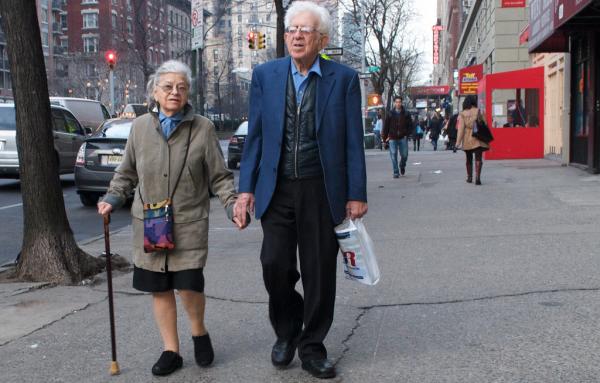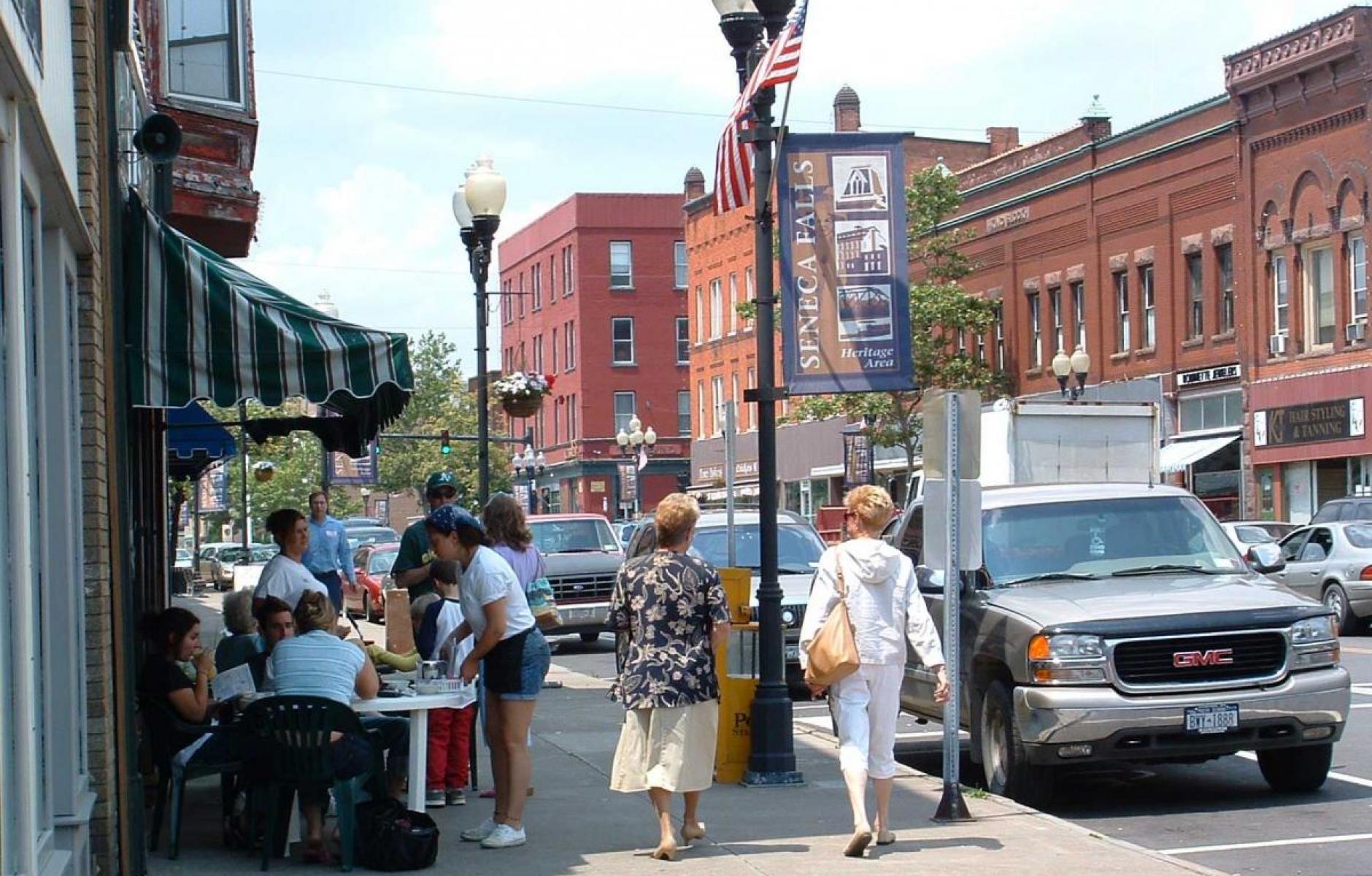
Walkability indexes are flawed. Let's find a better method
Walk Score was launched in 2007 and it was hailed as a big advance for pedestrians and urbanists. For the first time, you could type in an address anywhere in the US and get a score from 0 to 100 on “walkability.”
Walk Score began as a small-scale project with a mission, “to promote walkable neighborhoods.” It proved highly successful because it is useful for real estate marketing, research, and journalism; I have used it extensively in my writing, but always with a grain of salt.
In 2014, Walk Score was purchased by the national real estate brokerage Redfin, and it lost its public-spirited mission. That year, the US EPA launched a National Walkability Index (NWI) as an alternative.
While walkability indexes are useful, they are severely flawed. They systematically overestimate the walkability of certain types of places, while underestimating walkability in other places. There is no easy way to fix these indexes, which are based on the faulty premise that proximity to destinations makes a place walkable—or at least is an accurate proxy for walkability. This is not true in many cases. Fortunately, there is a way, at least theoretically, to create a far more accurate of measure of walkability. With data from smart phones, we could measure how much people actually walk. We already have this information for driving, in real time. It is in the public interest that we know how many people walk as well. This data does not seem to be particularly intrusive. A combination of walking and driving data could go a long way to fixing problems with walkability indexes.
In this article I’ll explore the problems with NWI, which are similar to Walk Score’s inaccuracies, which I wrote about in this article. But first, why is measuring walkability critical? Walkability is a key factor for real estate investment. The unmet demand for living in mixed-use, walkable places is tremendous—which is why we have seen a revival of downtowns and urban neighborhoods nationwide. Even in the suburbs, walkable places are attracting substantial investment. People who are banking on walkability, and putting dollars toward making places more walkable, need to accurately assess how well the money is spent. Also, substantial research is now devoted to walkability, which impacts the environment, livability, and the economy. To the extent that the research is founded in inaccurate data, the conclusions will be flawed.
The NWI, extensively used for research, is often wildly wrong in its assessment of the walkability of suburban areas with shopping centers and malls. Places that are, on the ground, objectively dangerous and unpleasant to walk—with few actual pedestrians—are listed as “highly walkable.” Virginia Beach Boulevard in Virginia Beach, Virginia, is one example. Many miles long, Virginia Beach Boulevard is the locus of sprawling commercial development, including stores and eateries of all kinds. Below is a Google street view of Virginia Beach Boulevard, and the map from NWI. The site of the photo is marked on the map, and dark green is labeled by NWI as “most walkable.”
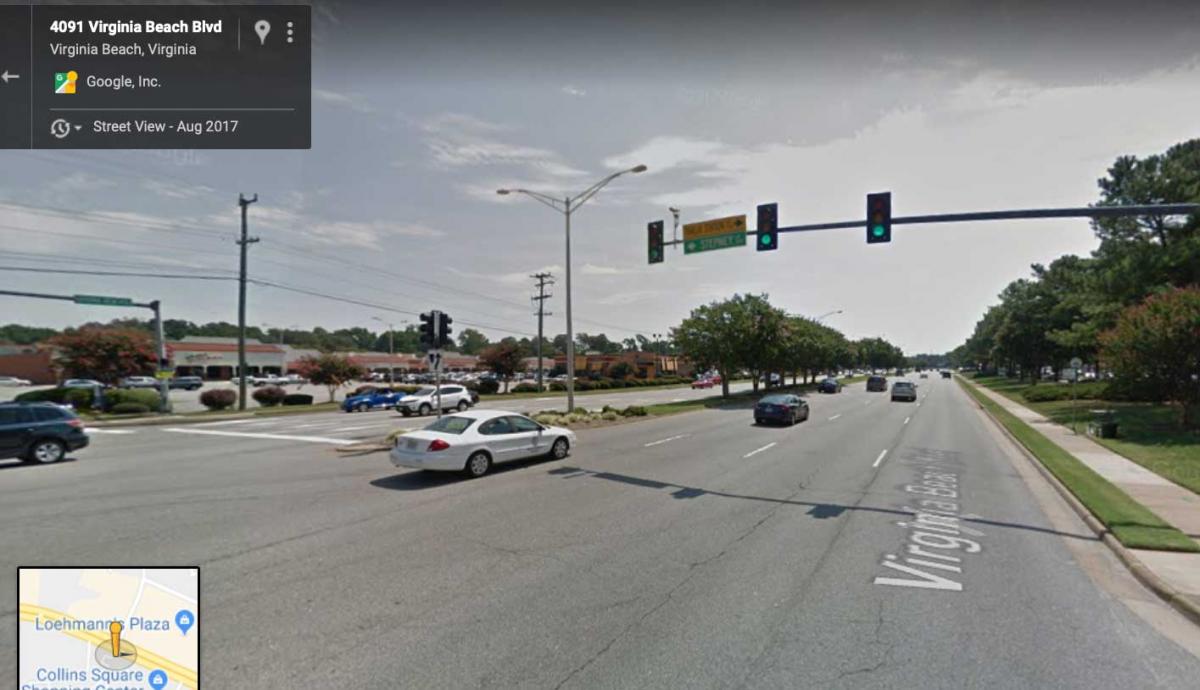
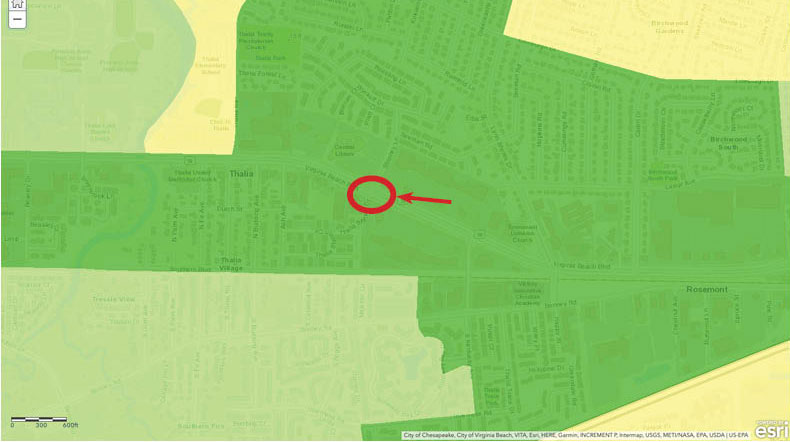
Notice there are no pedestrians in the Google view—not even in the far distance. This thoroughfare is difficult and dangerous to cross. Who would want to walk here anyway? Despite the abundance of destinations in stores, restaurants, and other businesses along this thoroughfare, the distances are too great, and the walk would be dead-on boring. There are no active frontages and little of interest to see, except for cars rushing past. The photo tells the story—lots of cars and no people. Virginia Beach Boulevard, at this location, should get a Below Average Walkable rating at best.
Here’s another example from Irvine, California.
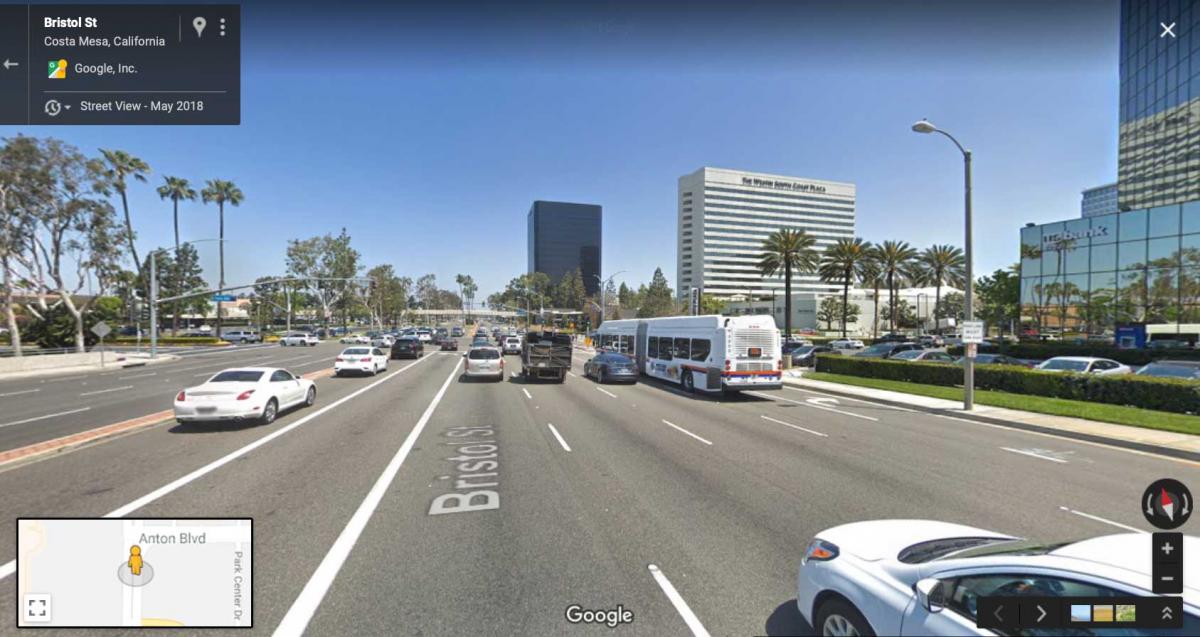
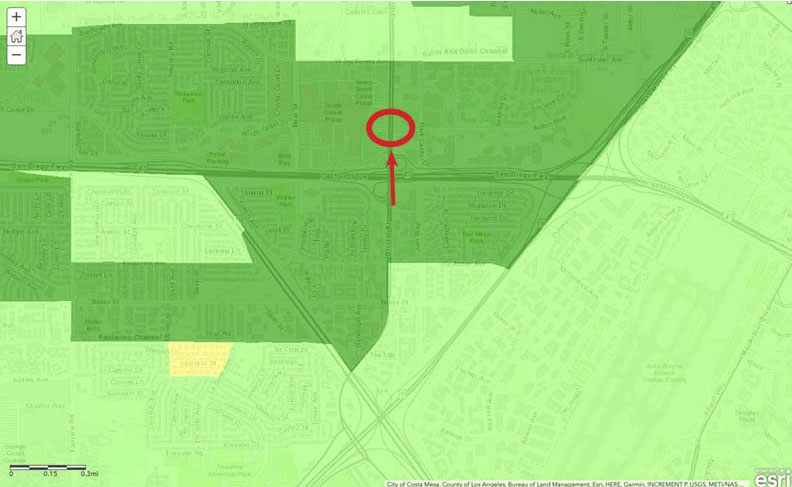
Bristol Street in Irvine is dreadful for pedestrians. No sane person with any other choices would try to cross this street on foot. Once again, this gets the Most Walkable rating by NWI. These images are not rare exceptions. I estimate there are thousands of similar places in metro areas nationwide that NWI calls Most Walkable that are not in the least walkable. This is a problem.
On the other end of the scale, some of the most walkable places are severely downgraded by NWI. That is because the NWI is not fine-grained enough to accurately determine walkability in many instances. The NWI only measures “census block groups,” which are areas with a population of 600 to 3,000 people. This method unfairly punishes some neighborhoods in small cities and towns that are highly walkable.
A walkable portion of a small city may also include, in the census block group, rural and suburban areas that are not walkable. The entire area is labeled as not very walkable, even though residents of many addresses in that area do not need a car to get to services, school, and their jobs. A great example is South Albany Street in Ithaca, New York—my town.
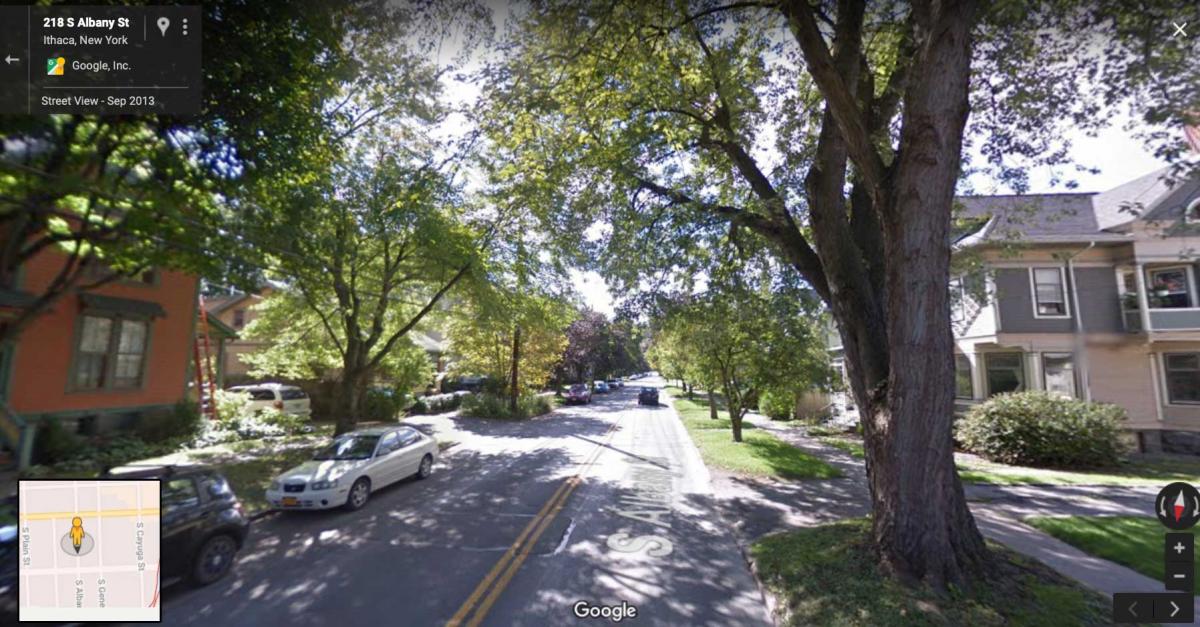
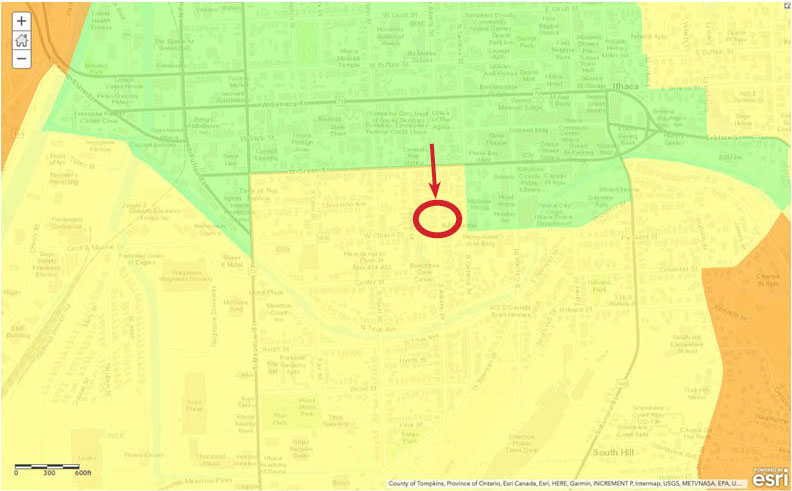
This is a highly walkable street in a highly walkable city—Ithaca has the highest walk-to-work rate of any core city in the US at around 40 percent. South Albany Street is two blocks from downtown—a major job center. It is also two blocks from a transit hub with frequent service to all of the area’s other major job centers—a university, a college, and a regional medical center. You don’t need a car to live on South Albany Street. Yet that street and most of the surrounding Southside neighborhood is colored yellow by NWI—“below average” in walkability—because the census block group also includes adjacent suburban and natural areas that are outside the city. There is no dark green on this map even though much of it should be "most walkable." The same condition would apply in cities, towns, and walkable urban centers in the suburbs that are relatively small compared to the surrounding sprawl and/or countryside.
Because of that, many retrofitting suburbs will face an uphill battle to get high walkability ratings from NWI—and in distinguishing themselves from unwalkable suburban places that inappropriately get a high rating. Many small towns and cities have good urbanism—they should get credit for that good urban form and investors should not be steered away because of a flawed walkability index.
Since perception affects reality, the rating flaws could have real consequences. Smart Growth America uses the NWI to measure “smart growth potential,” for example, for the purpose of advising investors and municipalities on how to get more for their smart growth investments.
One of the reasons behind walkability indicators is to give communities an incentive to boost their walkability (that was Walk Score's original stated purpose). But when you already get the highest walkability rating for car-centric commercial sprawl—why invest in better infrastructure to make a place more walkable? When you already have great walkability but your numbers come out low because of technical flaws in the index, this only serves to discourage efforts towards making places walkable. That wasn't EPA's purpose in creating NWI.
For researchers, the current indexes muddy the difference between places that are walkable, and places that are not. Good science is based on objective reality. When the National Walkability Index gives a higher score to places where very few people walk compared to places where almost everybody walks, there’s a problem.
A better walkability measure would take into account how many people actually walk, compared to how many drive, in a given location. That could be accomplished using a ratio of walking to driving on public rights of way. Walking inside of a building—like a shopping mall, would not count. The only important variable would be how many people walk, relative to how many people drive, to the mall (or wherever).
Such a system might yield some interesting results. We might be surprised to see lots of people walking in some places, and surprised that few are walking elsewhere. What are the qualities that unexpectedly get people on their feet? Maybe a place that we don’t think is walkable actually is walkable, and designers could learn something important.
Given smart phones, this data is available. One question, though, is who owns the data. Would the owners of this data make it available for the public purpose of improving walkability indexes? I don’t know the answer, but I don’t see this as an insurmountable problem given that the data is already used for automobile traffic on public thoroughfares.
Our walkability indexes today only measure walkability indicators, and such indicators are often wrong. Computers don’t walk and they can’t truly recognize walkable places. When aggregating indicators yields bad results, computers don’t care. Researchers may or may not be aware of NWI and Walk Score flaws, but for them it is simpler to use the data that is available and pretend that the problems don’t exist.
No doubt coming up with a better walkability index, such as I propose, would be difficult—posing technical problems that would have to be solved. I am confident that the problems could be solved and the project would be worth the effort. Until then, skepticism is justified in evaluating any research that uses NWI or Walk Score. For non-research uses, human judgment is needed, and let the buyer beware. An investment in a supposed “walkable” place may not yield the desired economic outcomes, and vice-versa.





